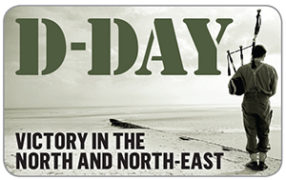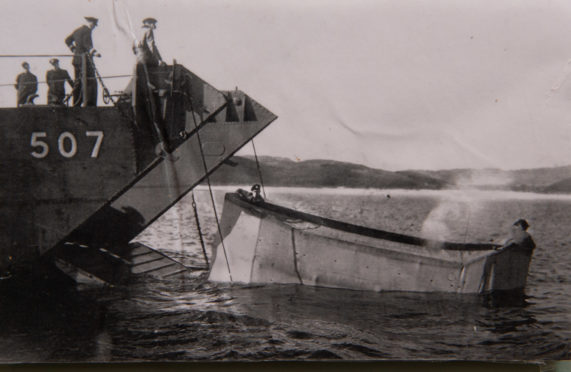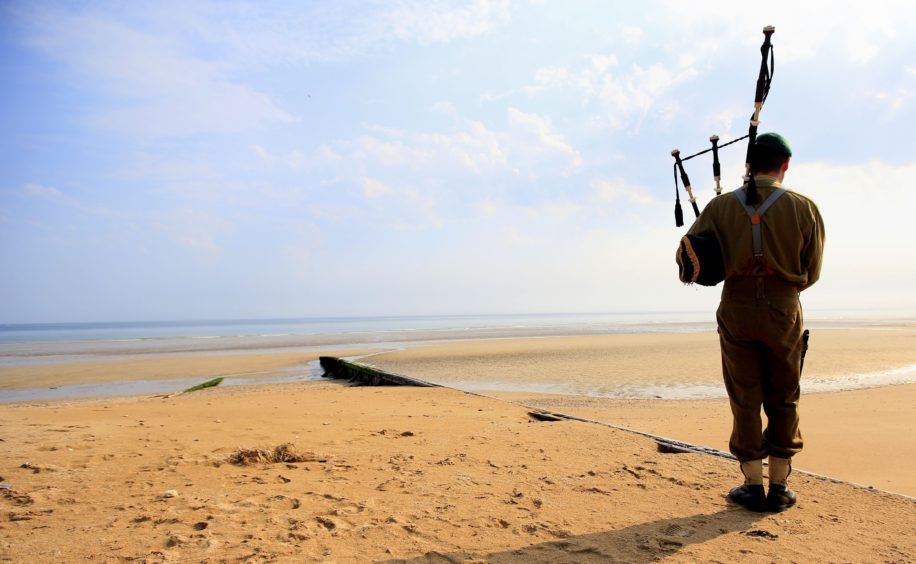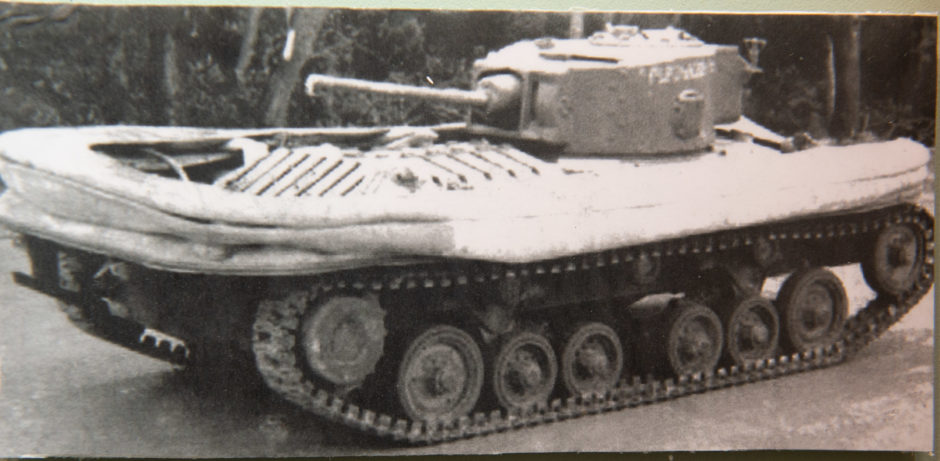As our series continues, Mark Mackay discovers how the seeds of a bloody D-Day victory were sown on the beaches of the north amidst much secrecy
Masked by sand, sea and time it may be, but evidence of the role Moray played in the D-Day Landings can still be found – sometimes explosively so.
More than 800 miles separate them, but the beaches of Nairn, Culbin Forest, Burghead and Findhorn will forever be linked to those of Normandy.
For a short period during 1943, the beaches were arguably among the most important miles of coastland in Scotland as troops, tanks and ships replaced the population.
Civilians were cleared from their homes to allow for the exercises to take place in relative secrecy during 1943.
The military had surveyed a number of sites around the UK seeking those with a similarity to the beaches of northern France.
In doing so, they found the coastline of the Moray Firth – around Forres and Nairn and further north, at Inver – bore a suitable resemblance to the Normandy coastline where the landings were to take place.
Families were given a matter of weeks to evacuate their homes – a testing task for the many farmers who were forced to take their livestock with them.
Some were able to move the thousands of cattle and sheep they owned to new pastures but many faced selling their animals, with the local marts filled for days.
Once free of prying eyes – though local communities were hardly unaware of what was going on – the coastline became home to the men of the 3rd Assault Division.
They took part in intense assault landing rehearsals and live fire exercises – it is not by chance that ordinance is regularly uncovered on the region’s sandy shores, where concrete pill boxes still look out to sea.
The division also trained in the use of amphibian tanks.

Known informally as “Donald Ducks”, they were examples of the Valentine tank, which was built in greater numbers than any other British armoured fighting vehicle of the war.
They were fitted with flotation skirts to aid buoyancy and allow them to be landed on the beaches.
It was hoped they would transition from landing craft to beachheads with ease, but the exercises on the Scottish coast proved they would not.
Many struggled, flotation devices failed, propellers struggled and as many as eight tanks were lost.
A number have since been found – one off Findhorn – while that at Culbin is a registered war grave due to the life that was lost during the exercises.
The final resting place of a number of the others remains unknown, such was the secrecy surrounding the exercises.
By the time the Allied forces landed on the beaches of France, not a single Valentine tank was with them, the vehicles having been replaced by US Sherman tanks.
The last full scale exercise for the 3rd Division in Moray was held on the night of March 17, 1944, when the call came to begin travelling south ahead of Operation Overlord.
Though tragic, the single loss of life experienced by the division in Moray was nothing compared to that faced by the US Army and Navy the following month.
Almost 1,000 American troops are said to have lost their lives during Exercise Tiger – a massive rehearsal staged over several days on Slapton Sands on the Devon Coast.
It too had been found to bear striking similarities to the other side of the Channel but was, of course, much closer to enemy forces.
Convoy ships were to have been in place to offer protection and patrols were on the lookout for German naval forces.
But as exercises took place, a group of E-Boats on a standard mission out of Cherbourg somehow slipped through and, on spotting the landing craft, opened fire.
Torpedoes struck three vessels, only one of which was able to limp to safety.
The others went down, taking with them hundreds of soldiers and sailors trapped below decks.
Many more drowned after leaping overboard, weighed down by heavy equipment and incorrectly worn lifebelts, or succumbed to hypothermia in the chilly water.
On D-Day, Tuesday June 6, the 3rd Assault Division and the men of the 13th/18th Royal Hussars (Queen Mary’s Own) – who had also practiced on the Moray Firth – landed on Sword Beach under the banner of the 27th Armoured Brigade.
The easternmost of the five landing areas, it placed Allied forces within striking distance of the city of Caen.
Members of Nairn Royal British Legion plan to hold a short service at the 3rd British Infantry Division Memorial on the links at Nairn on June 6, at 11am.
A representative from the modern-day 3rd Division is expected to be present and a piper from Nairn Pipe Band has been invited to play Highland Laddie, one of the tunes the legendary piper Bill Millin – Piper Bill – played on Sword Beach on D-Day.
Nairn RBL President, Lt Col Bob Towns, said men of the Seaforths and Camerons had been moved from their training base at Fort George in November 1943 – leaving for Pinefield camp at Elgin – to allow the 3rd Division to begin training for the Normandy landings.
“Two armoured regiments were based there – the 13th/18th Hussars and the 22nd Dragoons,” he said.
“The regiments were equipped with DD (Duplex Drive or ‘Donald Duck’) tanks fitted with flotation screens and propellers.
“Remains of the three concrete launching ramps still exist at Fort George.”
Lt Col Towns added: “Exercises took place on the Fort George training area, where some of the ‘enemy’ bunkers still survive by the shore.
“Training also extended along the coast between Nairn and Findhorn Bay, where the Culbin sands were still open dunes, and in Burghead Bay.
“There were a number of losses when the tanks capsized.
“The main area used for training with live gunfire support from the Royal Navy and artillery was the Tarbat Peninsula.
“The area between Tarbat and Fearn was evacuated during December 1943 and remained so until May 1944 to allow the live firing.
“The MoD undertook not to use houses as targets.”
Harbouring vital secrets
Secretive preparations for the D-Day landings took place around the Scottish coast, with some of the most significant taking place at Garlieston.
The remote port in Dumfries and Galloway was used to trial three prototypes of the “Mulberry” floating harbours.
Flexible steel roadways floated on pontoons, known as beetles, and were designed to allow the unloading of ships off the Normandy coast – avoiding the need to take and hold stoutly defended conventional harbours.
Their creation was championed by Prime Minister Winston Churchill in the wake of a failed amphibious raid on Dieppe in 1942.
Two were eventually built and while the US harbour was destroyed by a storm, two-and-a-half million men and half-a-million vehicles landed in Europe through that at Arromanches.


